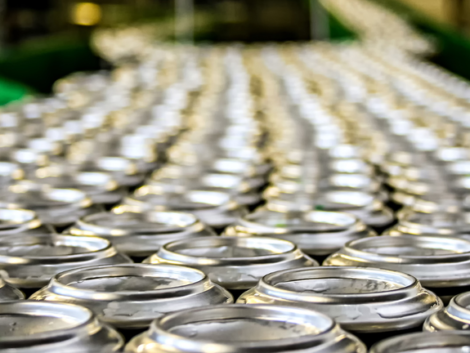Aluminium cans best support circular economy, says study
The International Aluminium Institute (IAI) commissioned research into the recycling of three beverage container materials – aluminium, glass and plastic (polyethylene terephthalate – PET).
The findings show that aluminium cans best support a circular economy, and that compared with aluminium cans, more glass and plastic bottles end up in landfills because they are not collected.
Today more than 70% of the material used in aluminium cans is recycled into new products – almost double that of glass (34%) and plastic (40%).
On behalf of the IAI, Eunomia Research and Consulting studied data in five regions: Brazil, China, Europe, Japan and the US.
It looked at the end-of-life processing losses for aluminium cans, glass bottles and plastic (PET) bottles. The study also looked at the collection, sorting, reprocessing and thermal processing, closed-loop recycling and open-loop recycling.
This is the first comprehensive public study analysing the recycling value chain for single-use beverage containers in five key markets.
The end-of-life recycling flows for three beverage materials – aluminium, glass and plastic (PET) for 2019, based on the data developed by Eunomia Research & Consulting is now available on alucycle.
Ramon Arratia, Vice President Global Public Affairs at Ball Corporation, said: “While no drinks container has achieved its full circularity potential yet, aluminium outperforms glass and plastics (PET) at all stages of the waste management system.
“Today, aluminium cans are the most recycled beverage containers globally. Once the aluminium can is collected from the consumer, it has an unrivalled sorting, reprocessing and remelting efficiency rate of 90% compared with glass (67%) and PET (66%).
“On this basis, aluminium can be described as a material of choice for a circular economy. This is especially important when we look at the carbon reduction potential of recycling.”
Andrew Wood, Group Executive Strategy & Business Development at Alumina Limited, said: “The number of aluminium cans collected at the end of their life is about 18% higher than PET bottles and 28% higher than glass.
“A greater proportion of PET and one-way glass bottles end up in landfills or waterways because they are not collected. In a decarbonising world, this is likely to contribute to higher demand for both recycled and primary aluminium.”
Marlen Bertram, IAI’s Director, Scenarios & Forecasts, added: “As the Institute celebrates its 50th anniversary this year, we have been reflecting on our organisation’s long history of data collection, analysis and modelling.
“Aluminium is one of the most recyclable materials on the planet and the IAI is campaigning to ensure end-of-life products are returned into the recycling loop given the economic and environmental benefits of the metal in our global economy.
“Comparing recycling rates of different materials is meaningless if you don’t know how the rate is measured and into what products the material is recycled back to.
“This study is the first public study that comprehensively analyses the extent of recycling and losses of three beverage containers in different regions.
“By increasing the precision of identifying where major losses occur, the study could provide solutions to improving the rate of recycling for all materials. We are clearly in a new era in circularity transparency.”








